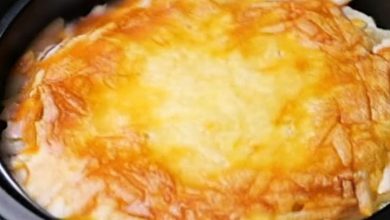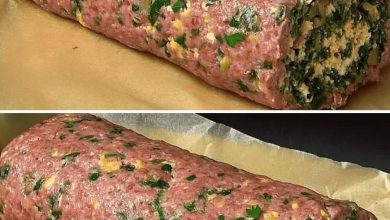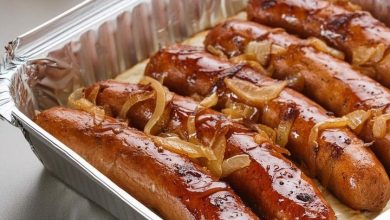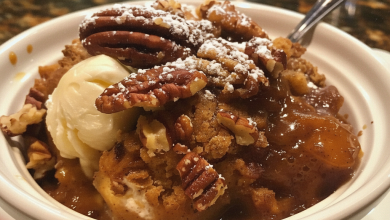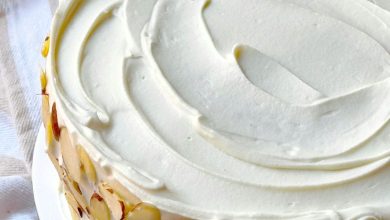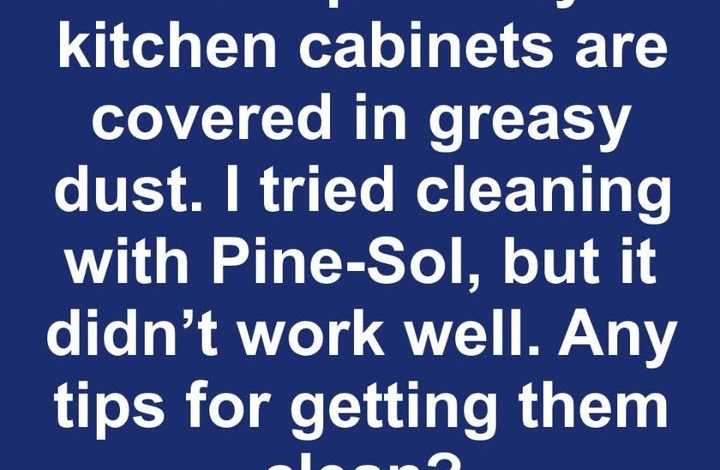
This is news to me!
Tidying up the often-neglected tops of your kitchen cabinets might seem like a chore that’s easy to put off. However, these out-of-sight areas tend to collect a surprising amount of sticky, greasy dust over time. This accumulation isn’t just visually unappealing; it can also become a breeding ground for unwanted bacteria and allergens. Successfully tackling this cleaning challenge involves first understanding why this grime builds up and then choosing appropriate cleaning methods to bring back the sparkle to your kitchen.
ADVERTISEMENT
Understanding the Problem: The Buildup of Greasy Dust
ADVERTISEMENT
The common culprit behind the grime on your cabinet tops is what we call “greasy dust.” This occurs because of the natural combination of airborne grease particles released during cooking and regular household dust. Over time, these elements settle onto various surfaces throughout your kitchen, forming a stubborn, adhesive layer. The tops of your kitchen cabinets are particularly vulnerable to this buildup for a couple of key reasons. Firstly, they are often overlooked during regular cleaning sessions, making them a prime spot for accumulation. Secondly, they are directly exposed to rising cooking fumes, which carry grease particles upwards. This combination leads to a layer of grime that can become quite difficult to remove with just a simple wipe.
ADVERTISEMENT
Considering Cleaning Options: Why Some Might Be Less Effective
When faced with a cleaning task, many people reach for familiar products like Pine-Sol. While Pine-Sol is a well-known cleaning agent valued for its disinfecting properties and recognizable scent, it might not be the most effective solution for tackling the specific challenge of greasy dust on kitchen cabinets. Pine-Sol’s primary purpose is generally geared towards overall cleaning and sanitization. Its formulation might not possess the specific grease-cutting power needed to break down the thick, sticky layers of grease that have mixed with dust over time. Furthermore, its liquid consistency can present a practical challenge when cleaning vertical or overhead surfaces, as it may tend to drip before having sufficient time to work on the grime.
Effective Alternative Cleaning Solutions for Greasy Dust
To more effectively combat greasy dust, it’s beneficial to consider cleaning agents specifically formulated to tackle grease. Common household items can often be surprisingly effective. For instance, regular “dish soap, which is formulated to cut through grease,” can be a very useful tool. Its surfactants are designed to break down fats and oils. Another excellent alternative is a simple homemade solution using “vinegar and baking soda,” which can often “work wonders.” Vinegar acts as a natural degreaser, helping to dissolve the greasy components, while baking soda provides a gentle abrasive action that can help lift stubborn grime without scratching most surfaces. For particularly challenging buildup, commercially available degreasers can be highly effective. However, it’s crucial to “always ensure they are safe for the surfaces you are cleaning” by reading the product instructions and testing in an inconspicuous area first.
A Practical Step-by-Step Guide to Cleaning Your Kitchen Cabinet Tops
Here’s a simple guide to help you effectively clean the tops of your kitchen cabinets:
- Gather your necessary supplies: This includes your chosen degreasing agent (such as dish soap, vinegar, or a commercial degreaser), a non-scratch scrub brush or sponge, several clean microfiber cloths, and a stable step ladder to ensure you can reach the areas safely and comfortably.
- Clear the cabinet tops: Begin by removing any items that you might have stored on top of your cabinets. This will give you a clear working space.
- Apply your chosen degreasing solution: If you’re using dish soap, mix a few drops into a bowl of warm water. For a vinegar solution, combine equal parts white vinegar and warm water in a spray bottle. If using a commercial degreaser, follow the product’s instructions carefully. Apply the chosen solution generously to the greasy areas.
- Allow the solution to work: Let the degreasing solution sit on the grime for a few minutes. This will give it time to penetrate and start breaking down the grease and dust buildup.
- Gently scrub the surfaces: Using your scrub brush or sponge, gently scrub the affected areas. Avoid applying excessive pressure, especially on delicate cabinet finishes. The loosened grime should begin to lift.
- Wipe away the loosened grime: Take a damp microfiber cloth and wipe away the loosened dirt and cleaning solution.
- Rinse and repeat as needed: Rinse your microfiber cloth frequently with clean water. Continue wiping until all traces of the greasy dust and cleaning solution are gone. You may need to repeat the application and wiping process for particularly stubborn areas.
- Dry the surfaces thoroughly: Once the cabinet tops are clean, use a clean, dry cloth to thoroughly dry the surfaces. This will help prevent water spots and leave your cabinets looking their best.
Simple Preventive Measures to Maintain Clean Cabinet Tops
Preventing the heavy buildup of greasy dust in the first place can save you time and effort in the long run. Here are a few simple preventive measures to consider:
- Use protective liners: Consider lining the tops of your cabinets with easily replaceable materials like wax paper or old newspapers. These can catch the dust and grease, and when they get dirty, you can simply remove and replace them.
- Regular light dusting: Incorporate a quick dusting of your cabinet tops into your regular cleaning routine. Even a light dusting every few weeks can significantly reduce the accumulation of greasy dust.
- Utilize your range hood: If you have a range hood above your stovetop, make it a habit to turn it on whenever you are cooking. A good quality range hood effectively vents out cooking fumes and grease particles, preventing them from settling on your kitchen surfaces.
- Include cabinet tops in your regular cleaning: Make cleaning the tops of your kitchen cabinets a standard part of your overall kitchen cleaning routine, even if it’s just a quick wipe-down. Consistent attention will prevent heavy buildup.
Achieving a Clean and Inviting Kitchen Space
By adopting the right strategies and utilizing effective cleaning solutions, you can successfully restore the tops of your kitchen cabinets to a clean and pristine condition. Understanding the nature of “greasy dust” and employing appropriate cleaning methods will allow you to tackle this often-overlooked area with greater confidence. Furthermore, by implementing simple preventive measures, you can help maintain their cleanliness over time, ensuring that your kitchen remains a healthy, welcoming, and truly spotless space for cooking and gathering with loved ones.
